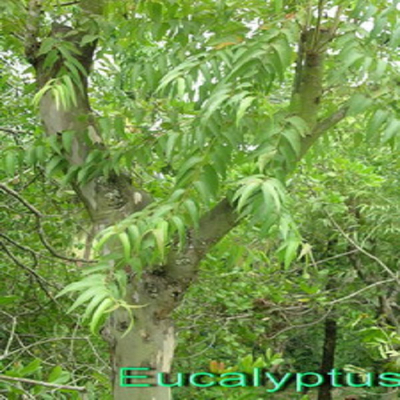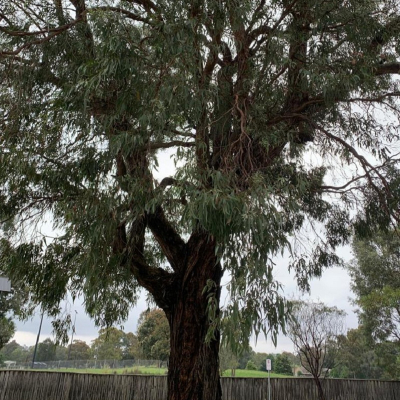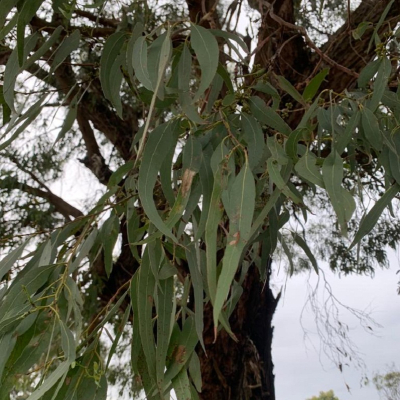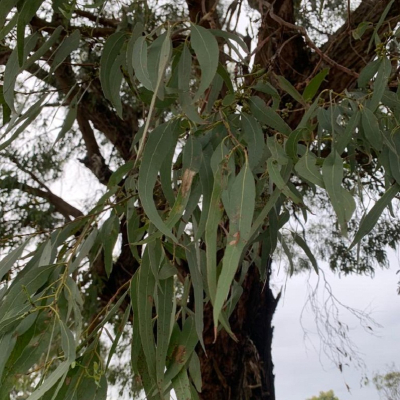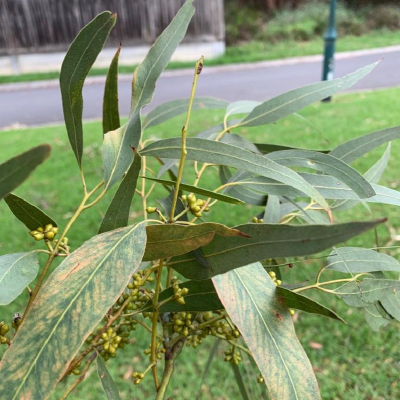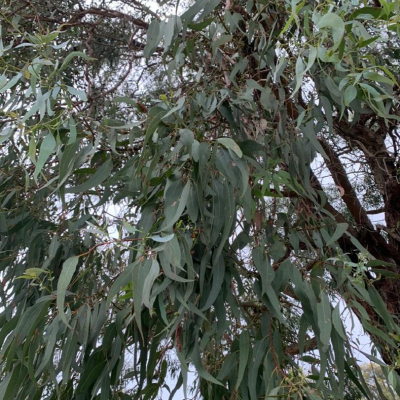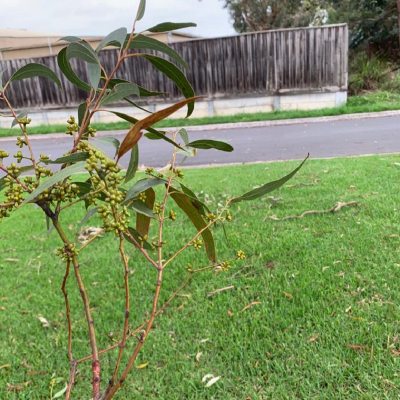Distribution and habitat: Found through out Australia and India
Botany: It is a tall tree with a crown of leaves and branches at top. The bark is smooth, white or faintly bluish in colour. Distinct cotyledonary, seedling, juvenile, intermediate and adult leaves are observed at various stages of plant.
- Leaves: Adult leaves are alternate and lanceolate.
- Inflorescence: The flowers are sessile, operculum, flattened, numerous and occur in axillary panicles.
- Fruits: Sessile, ovoid, truncate, contracted at the thin edge and the valves open downwards.
Properties: Cosmetic, Antiseptic, and Stimulant.
Chemical constituents: The oil contains citronellal, citranellol, geraniol, esters, pinene, cineole, neo-isopulegol, camphene, myrcene, limonene, p-cymene, γ-terpinene, linalool, citronellyl acetate, pulegol, and caryophyllene.
Uses: Cosmetics, Disinfectants, Drugs, Germicides, Paper, perfumery, timber.
Agro technology:-
Soil: The crop is grown well in acidic to slightly alkaline soils with a good organic matter content in it.
Climate: A moderate temperature coupled with reasonable humidity and well-distributed rainfall, are essential for development of these plants in the early stages . The seeds do not germinate if the atmospheric temperature is either very high or very low.
Seed propagation: Commercial cultivation of crop requires either raising a nursery or alternatively direct sowing in well prepared field in the proper season
Land preparation: Pits of 45 cm3 are dug at a spacing of 75-90 cm for planting seedlings. They are treated with FYM and 20 g rock phosphate and filled in to receive the seedlings.
Nursery preparation: The seeds should be sown as fresh as possible although they do retain their viability for 1 year. The nursery is reared between February to September on raised beds of 1.2 m X 1.2 m size or even in polybags or trays filled with soil. The seedlings are allowed to grow for 4-6 months in the bags, depending up on the season. Direct sowing cannot be adopted in regions subject to heavy rainfall or frost.
Planting: A spacing of 75-90 cm between rows and 75 cm between pits is ideal for raising a commercial crop. Transplanting in August or September in frost free areas and in frost areas, transplanting in February.
Fertilizer application: Nitrogenous fertilizers contribute positively towards increased production of leaves. A small dose of phosphatic and potash fertilizers should be given to the plantation every year. Irrigated areas about 20 Kg N and 30 Kg K2O/ha should be applied at the time of ploughing as a basal dose. The optimum dose of nitrogen for obtaining higher herbage and oil yield is 120 kg N /ha.
Plant protection: The important pests of Eucalyptus are termites, leaf cutting ants, Eucalyptus snout beetles, weevils, scale insects, cicadas, thrips and wood-borers. It is essential to treat the soil with Aldrin, or Dieldrin or Aldrex or 1-2% aqueous solution of Tafridin. The hairy caterpillar also feeds on the leaves in the early stages and the same can be controlled by the timely spray of Malathion. Some of the pathogen causing diseases are Pseudophaeolus baudonii, Diporthe spp. , Corticum salamonicolor, Phytophthora nicotinae, etc.
Harvesting:Accordingly, harvesting leaves during February, April, July and October is recommended. In Kerala, harvesting twice a year, in May and November. Plants can be pollarded which are ready for harvesting after 4-5 months.
Processing: Oil is obtained by steam distillation of either fresh or dried leaves. Abscised and fallen dried leaves also can be collected and distilled. Leaves are steam distilled for 2-3 hours soon after harvesting to avoid loss of evaporation as well as deterioration of its quality during storage.

